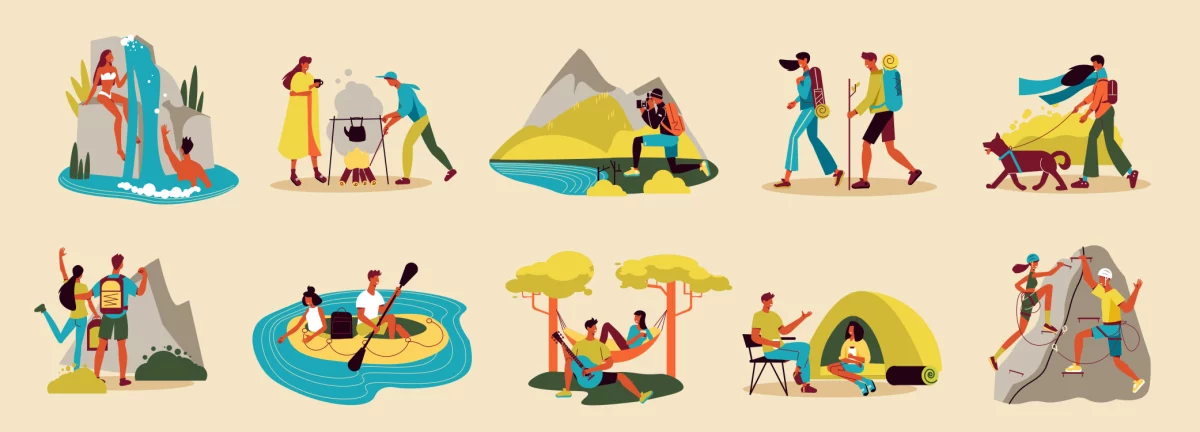
By Lauryn Lickteig, Content Writer
No matter how much storage space you have, it’s important to keep your outdoor gear organized. That’s particularly true in Central Oregon where sunshine, mountains, and adventure opportunities beckon and outdoor gear quickly stacks up causing clutter. When you keep your outdoor gear organized, it is easy to grab the skis you need for a powder day or your SUP for a float down the Deschutes without the frustration of digging through piles of gear.
Follow these 5 steps to create the ultimate gear storage space.
1. Donate and Sell Unused Gear
The first step to being organized is to minimize. Start the process of organization by deciding which gear you use most often and which gear you can donate or sell to a budget adventurer. The money you make by selling old equipment can be put towards your new storage system or upgrading your gear.
My personal favorite forum to sell used gear on is Facebook Marketplace because listings are easy to edit and I find they typically sell faster than on other platforms like Craigslist. While you can make more of a profit selling items yourself, sometimes it can be a hassle dealing with scammers and looky loos. A more stress-free option for selling gear that supports a local Central Oregon business is putting items on consignment at The Gear Fix.
2. Add Temporary Storage
If you are lacking indoor or garage space, a relatively cost effective option for gear storage is a portable storage unit. Portable storage units are an ideal option for individuals that are unable to create a permanent storage solution but don’t want to drive to a storage unit every time they need a piece of gear. Portable storage units are secure, weatherproof, and can be placed in your driveway or side yard making them easily accessible. While portable storage is a more temporary solution, it is ideal for individuals during transition periods or with plans of moving in the (near) future.
3. Build a Storage Shed
If you own a property, a permanent storage solution might make sense for you. A DIY or pre-made storage shed offers more customization but it also comes with a higher price tag. The cost of building material and labor are at an all time high, so make sure to do your homework before diving in. If you are into kayaking or mountain biking, ensure that your shed height is tall enough to support upright storage of bikes and wide enough for wall storage of kayaks, paddle boards, or snowboards. Build in enough shelving to allow for maximum use of the space without stacking too many bins on top of each other.
4. Categorize by Season and Hobby
Once you have your vessel for storage it’s time to get to the fun part – organizing! Group your gear into sections by hobby and season. Prioritize the gear for hobbies that you participate in the most often by putting it in the front of the shed or portable storage unit for easiest access.
5. Hang, Stack, and Label
Storage bins are your best friend! Whenever it is possible, condense every piece of gear into a designated storage bin. Consider using clear bins to allow you to see what is inside, and opaque bins for a streamlined look. 27 gallon bins are the perfect size for accessibility and interior organization with standard shelving units.
Quick Tips
- Organize small bins within larger totes. For example, inside a tote dedicated to hiking gear you may have smaller bins inside for water filtration, first aid supplies, bug spray, etc.
- Use wall space and hooks to organize awkwardly shaped items like helmets, ropes, and snowshoes.
- Secure large wooden dowels between shelving units to create a hanging space for rain shells, ski apparel, and life jackets on clothing hangers.
- Ensure that down-filled sleeping bags are always loosely stored either in the included, breathable mesh sack or hanging from a hook to maintain the integrity of the down.
- These hooks are an easy and affordable option to store bikes wheels-up from the ceiling.
- Always make sure gear is completely clean and dry before storing into totes to prevent mold.
The last step, and my favorite, is labeling. I have this inexpensive labeler from Amazon that gets the job done but is a bit tedious to use. The most common and easy method for labeling is duct tape and sharpie, or you can find an array of label makers online like this one, that are completely customizable.
Get started today! Contact Storage 2U today for a free quote!

